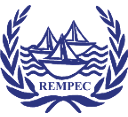Waste characterization
Recommendations for the classification of OSW on site
Recommendations for the classification of oil spill waste on site
Every spill produces specific waste according to:
- the quality of oil spilled (characteristics and weathering of the oil spilled),
- the sea and weather conditions,
- the substrate and the presence of seaweed and debris,
- the recovery and clean-up techniques implemented, and
- the quantities recovered.
The recovered materials may consist of (Source: IMO):
- oil or emulsified oil recovered at sea,
- oil or emulsified oil recovered during shoreline clean-up operations,
- oiled sand and gravel,
- oiled beach debris (wood, plastic, seaweed..),
- oiled dead birds and mammals,
- tar balls,
- oil contaminated clean-up materials, equipment and protective clothing,
- contaminated soil from storage sites, and
- residues generated by wash-down stations employed to clean response equipment or to clear birds and mammals.
All these materials will be more or less mixed and contaminated with oil. For example, liquid oil recovered from the shoreline will almost always contain some sand and small debris.
Three levels of characterization can be identified:
- The first characterization of waste will be carried out directly on site (i.e. classification), based on visual criteria to define segregation during waste collection and first storage on site.
- Some basic analysis can be required for a first diagnostic that help to validate or eliminate some treatment options (water content, Total Hydrocarbon Content, sand content, organic matter).
- Detailed and specific analysis will be required to check the most appropriate treatment for waste and compliance with entry criteria required for each type of treatment or disposal facilities (calorific power, Chlorine, Sulphur…) and evaluation of environmental impact by water or gas emissions (Polycyclic Aromatic Hydrocarbon – PAH, volatile compounds like benzene, toluene, ethylbenzene and xylene – BTEX, Metals). Specific analytical requirements have to be detailed for the entry criteria into each facility.
The first two levels of characterisation of waste are also useful ways to estimate the volume of recovered oil. Balance between volume spilled and volume recovered is always a difficult exercise. Visual estimation and basic HC content dosage can help rough balance estimation.
An estimation of the quantity of each type of waste is an important issue to deal with and this point will be developed in the section “Minimization, sorting at source, temporary storage & transport”, p.27.
List of the main potential types of oil spill waste
| Liquids | - % Oil : > 10%
|
| Polluted fauna | - % Oil : > 5%
|
| Polluted pebbles & stones | - % Oil : > 10%
|
| Polluted seaweed & Macro-algae | - % Oil : > 5%
|
| Polluted solid waste | - % Oil : > 5%
|
| Polluted sorbent | - % Oil : > 5%
|
| Semi-solids & solids (sand...) | - % Oil : > 10%
|

